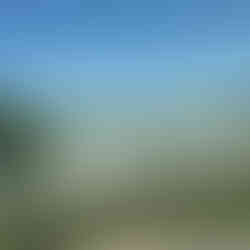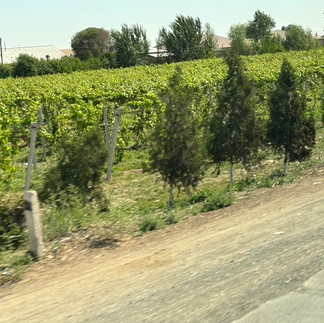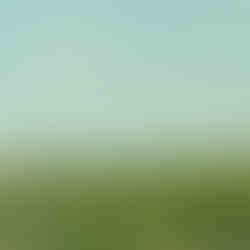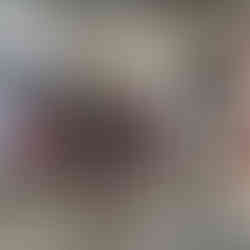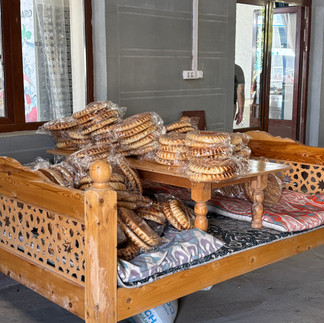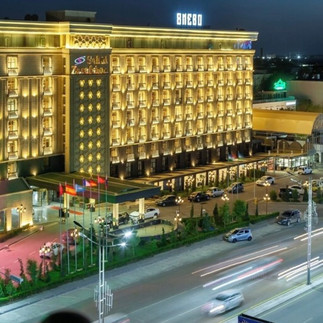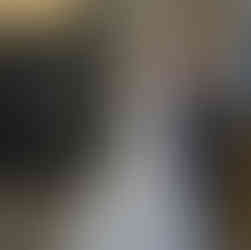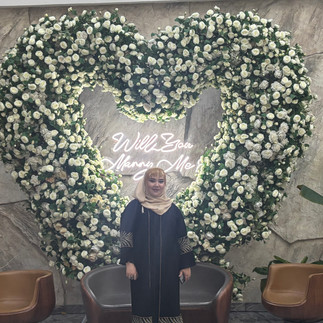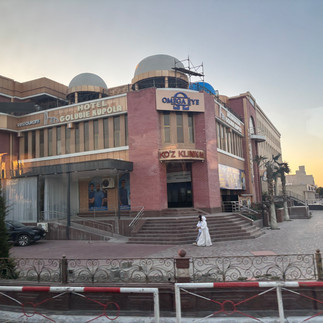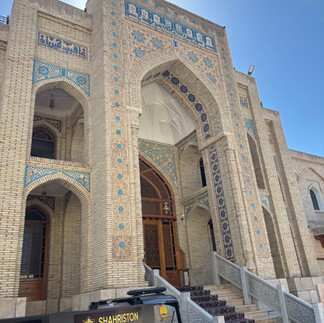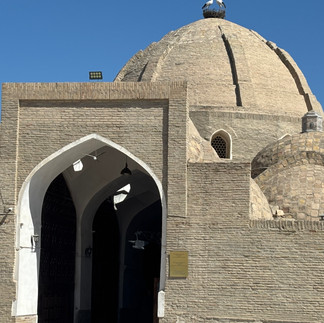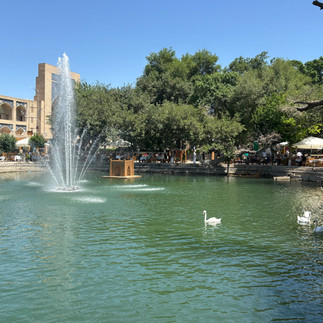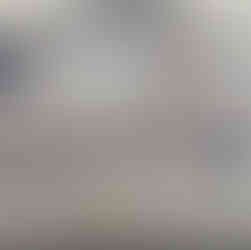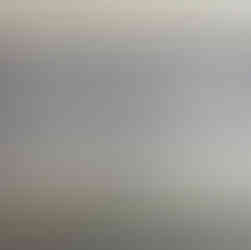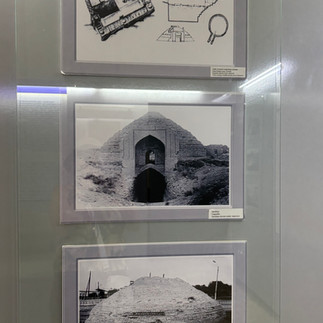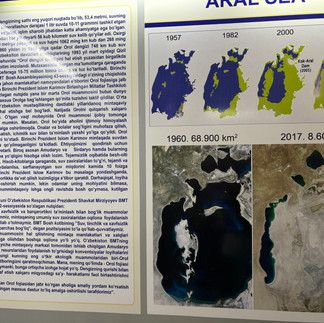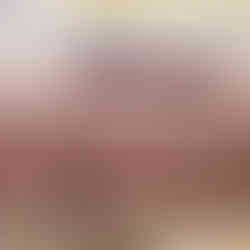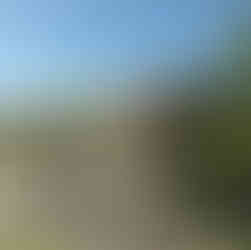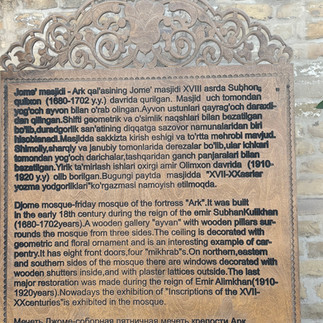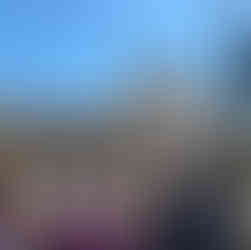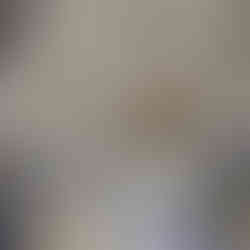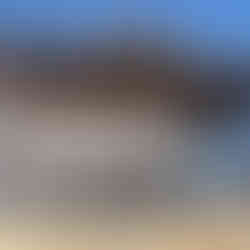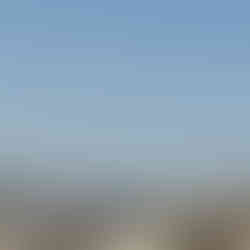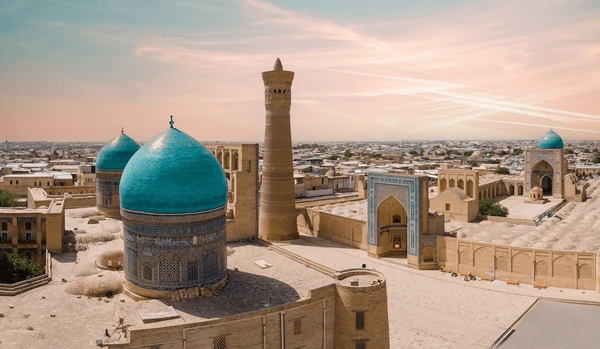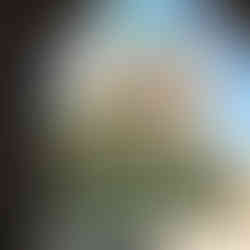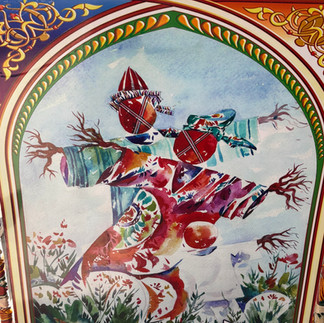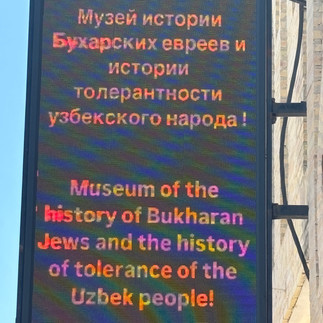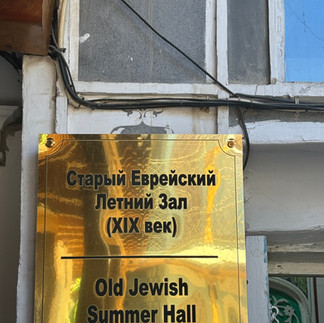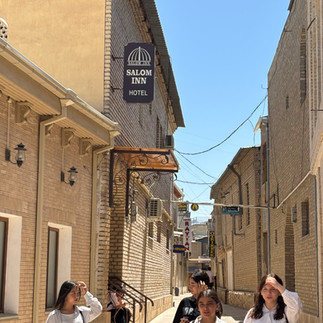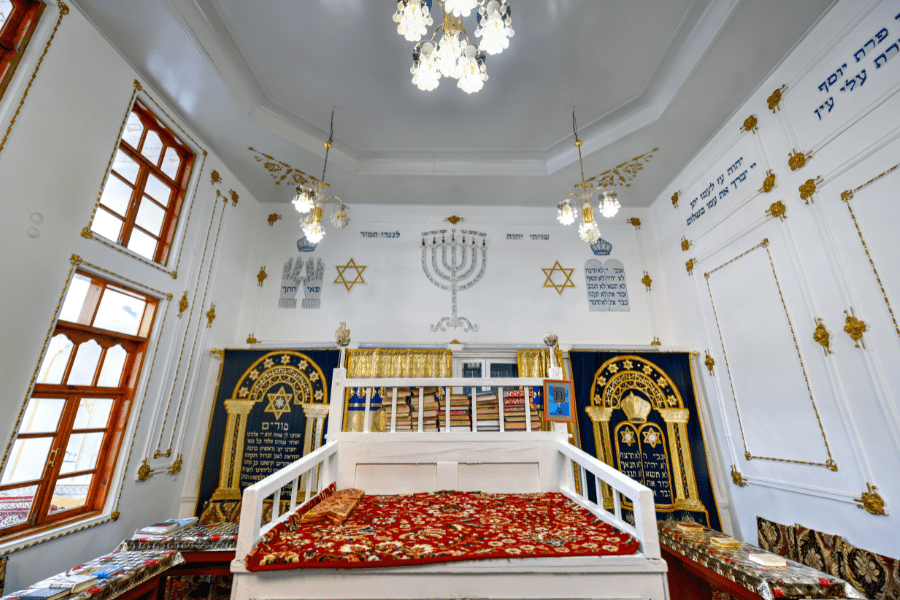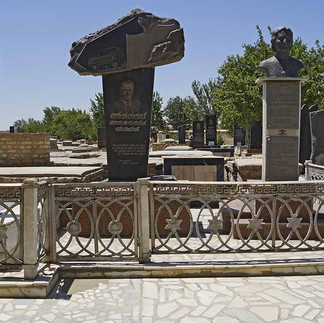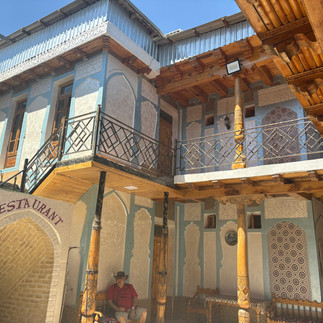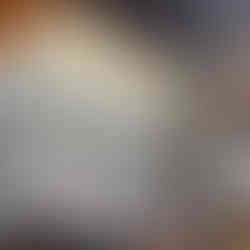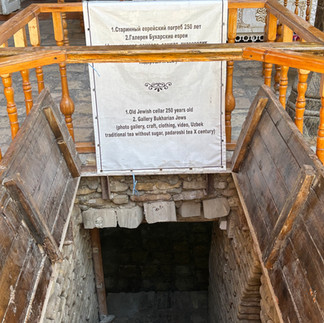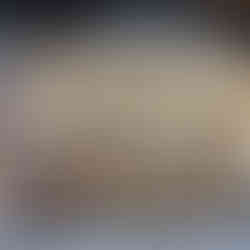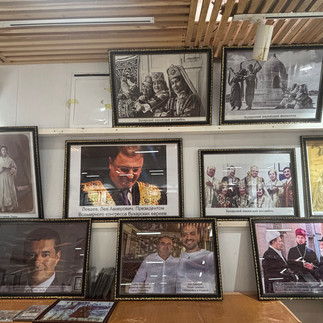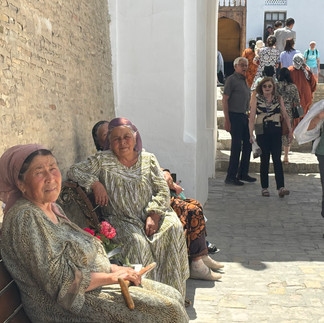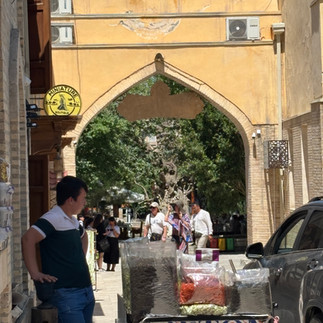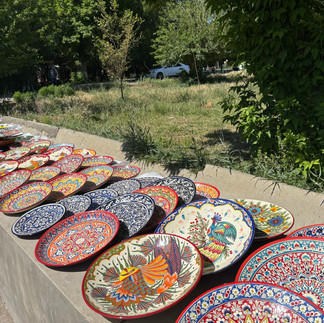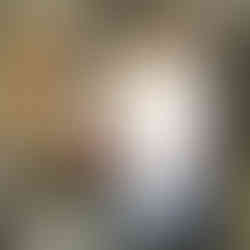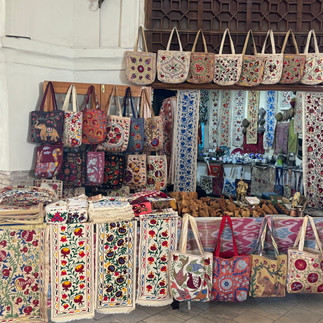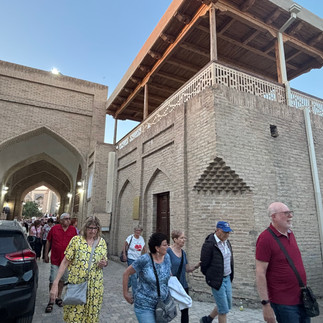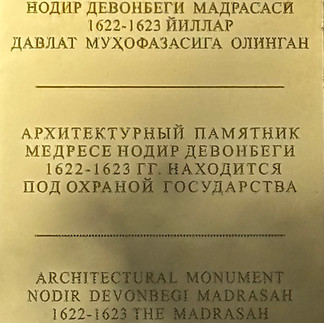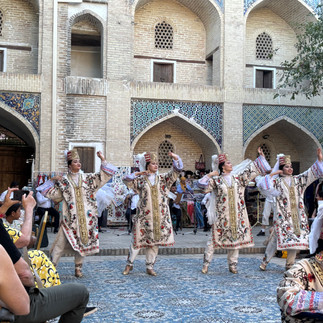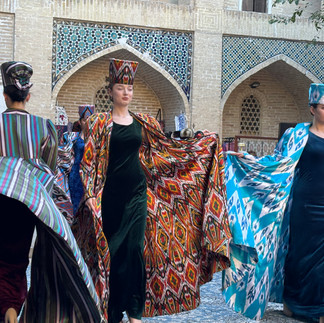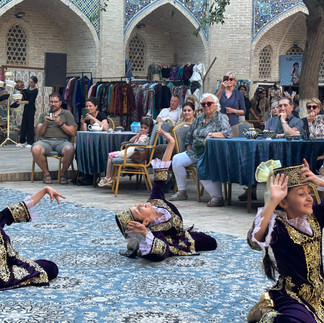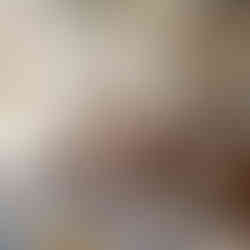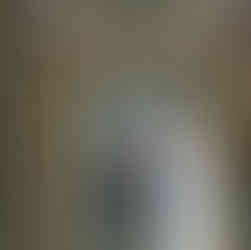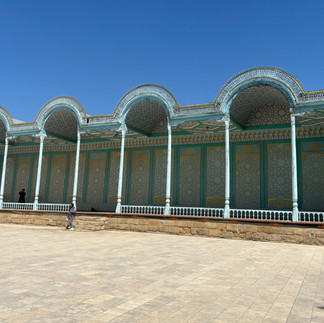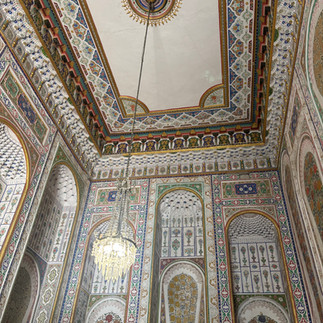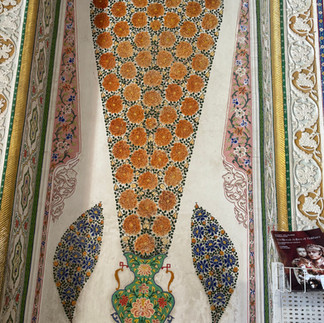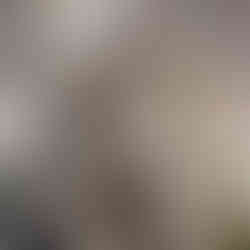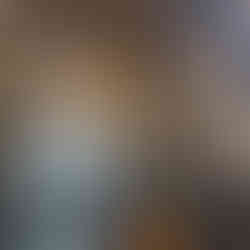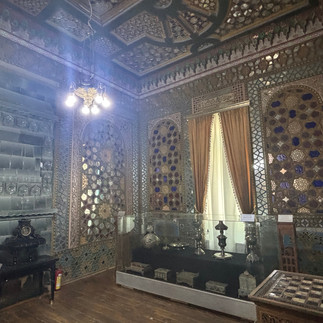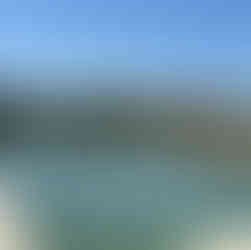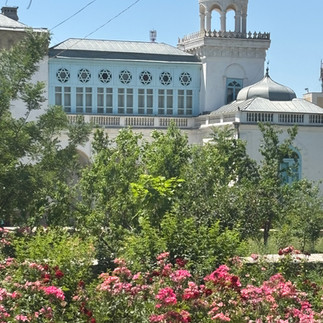Travel: Khiva to Bukhara. Uzbekistan May 10-11/2025
- Lili Naveh
- May 11
- 13 min read
A continuation of a guided tour to Uzbekistan which started on May 7th
TLV to Tashkent. 5/8-9 (here)
Tashkent 5/8-9 (here)
Khiva. 5/9 (here)
Departing Khiva
Departing exotic Khiva early morning, and venturing on a 7 hours Bus ride toward East was the plan for the day. Crossing, initially over the Amudaria River ,which flows through the territory of Central Asia (Afghanistan, Tajikistan, Turkmenistan, Uzbekistan). and then across the desolated Kyzylkum desert, as to reach Bukhara, wasn't my dream tour day.

Crossing the Amudaria River
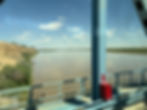

Apparently, the inefficient train ride on the Trans-Caspian railway that follows the path of the SilkRoad through much of western Central Asia, takes the same amount of time (7 hours) as a Bus ride,
Yet a flight back from Urgench International Airport (UGC) to Bukhara International Airport (BHK), would have made the guided group trip more costly.. Frankly spending time across uninteresting monotonous landscape, is a waste on all accounts..
So the group was doomed to the bus ride, leaving the verdant Oasis on its vast Rice fields , Cotton plots and vineyards behind, for the barren yellowish/reddish flat vast boring desert landscape
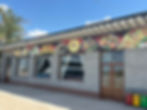
"Milliy Taomlar" is the Uzbek name for "national cuisine" and is often used for roadside restaurants serving traditional Uzbek dishes In the Kyzylkum Desert, offering Uzbek specialties like plov (Uzbek pilaf), lagman (noodles), and manti (steamed dumplings). These restaurants are common stops for travelers in the region,
The food we got served was not remarkable, though, to say the least.
When finally arriving in Bukhara, late afternoon, the feel of the famous religious fervent which Bukhara has been known for, was immediately sensed, upon briefly stopping at an hotel named Sahid Zarafshon , booked for the next 2 nights.

+998 65 505 50 00
Muhammad Iqbal st 7, 200100, Bukhara,
This modern "Faulty Towers" -like hotel.
had AC and shower problems, which required me changing rooms, late that night after a firm insistence.
Thus I wouldn't recommend staying
there.
Wedding at the Hotel
Few alternative more attractive Hotels' structures
Golubie Kupola Shariston Inor Hotel
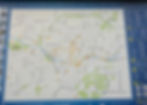
Located on the Zeravshan River, where an whole oasis was called Bukhara in ancient times, is the capital of Bukhara Region.
This third visited ancient city, situated on the Silk Route, is more than 2,000 years old , is now of about 300,00 residents, and is the seventh-largest city in Uzbekistan
Scholars believe that Bukhara was established around the middle of the first millennium BC. Throughout its history, Bukhara has been a coveted city for many rulers, changing hands from one conqueror to another, as it was long an important economic and cultural center in Central Asia.
The originally ancient Persian city served also as a major center of Islamic culture for many centuries and became a major cultural center of the Caliphate in the 8th c .
During the 9th and 10th c, Bukhara became the capital of the Samanid Empire.
being a prominent stop on the Silk Road trade route between the East and the West,
It rose as a major medieval center for scholarship, Islamic theology and culture.
The town was the birthplace of the scholar Imam Bukhari. - Persian Muslim muhaddith of the 9th c ,who is widely regarded as the most important hadith scholar in the history of Sunni Islam. Also Renowned figures, such as Abu Ali Ibn Sina, Abu Abdullah Jafar Ibn Muhammad Rudaki, Omar Khayyam, and others, lived and worked within its borders.
Under the reign of Tamerlane (Amir Timur), Bukhara continued to rise as a religious center, earning the moniker Bukhoroi Sharif, or Holy Bukhara.
If Samarkand (yet to be visited) also a merchant city can be more characterized as the militant Greek Sparta, thus Bukhara, and its scholastic allure, more resembled Athens.
Bukhara continued to be the epicenter of the Persian culture in medieval Asia until the fall of Timurid dynasty.
It served as the capital of the Khanate of Bukhara, Emirate of Bukhara and later Bukhara People’s Soviet Republic
Following the 1917 revolution, many historical edifices in Bukhara were demolished.
By 1925, the city became part of the Uzbek SSR.
UNESCO has listed the historic center of Bukhara for it has been known as
"Noble Bukhara" (Bukhārā-ye sharīf). containing 140 architectural monuments. numerous well-preserved mosques, madrasas, mausoleums, bazaars and caravanserais, dating largely from the 9th- 17th c.
The center is one of the best examples of per-Mongolian well preserved Islamic cities of Central Asia with an urban fabric that has remained largely intact, thus its significance today rests not in any particular building, but in the consistency of its urban layout, which has been carefully preserved making it the most complete medieval city that remains in Central Asia.
++++++++
The Heart of the Historic Town
One of the first enchanting places visited in the town's historic center, related to the city's much needed drinking and agricultural water supply, was a perfect pool
at a plaza that captures the soul of the city.
Lyabi-Hauz - Drinking Water Reservoir,

featuring one of the most popular spots and an holy one in the old center is a pond ("hauz") which since the 16th c, has attracted numerous residents and visitors as watermen once collected water from it for drinking and street watering purposes. Trade shops and tea-houses were also situated near the pond.
The locals still use the plaza as a central gathering point to drink tea, play board games, shop,and socialize. with the more modern additions of music and mobile shops
Now a days, having an ice-cream on. a hot day by this pastoral spot is a real treat
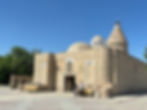
Museum Water Supply housed in the historically significant Chashma-i Ayub Mausoleum, within the scenic Samanids National Park,
The current building was constructed during the reign of Timur and features a Khwarazm-style conical dome uncommon in Bukhara
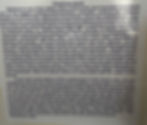
The museum provides a unique insight into the methods and technologies used for water supply in the Bukhara region from the 10th to the 20th c
Artifacts showcased at the museum include leather water skins (burdyuks), ceramic water pipes, and copper porcelain pieces.
There are also several maps of the ancient water systems, irriganional networks of the regions, and Hamams' locations
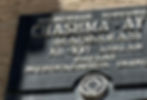
Chashma-i Ayub name means Job's well, due to the legend in which Job visited this place and made a well by striking the ground with his staff.
The water of this well is still pure and is considered to have healing proprieties
fate of
The sad liquidation story of Aral Sea is also showcased at the water supply museum

Over-irrigation demands of USSR for massive Cotton growth stopped the water flow of Amudaria River into the Aral Sea -( an endorheic lake lying between Kazakhstan to its north and Uzbekistan to its sout,) which began shrinking in the 1960s and had largely dried up into desert by the 2010s
Walking through Samanai Park
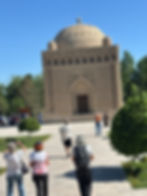
The famous Ismail Samanai tomb, which was completed in 905, is located in a park laid out on the site of an ancient cemetery. It is the oldest, best preserved and most breathtakingly original building in Bukhara, and the best surviving example of 10th c architecture in the whole Muslim world.
Amir Ismail-i Samani, was the Samanid amir of Transoxiana . (892–907) and Khorasan (900–907) an ancestor of the Samanid dynasty who renounced Zoroastrianism and embraced Islam.
Known in history as a competent general and a strong ruler, there are many stories about him written in Arabic and Persian source. His reign saw the emergence of the Samanids as a powerful force
This masterpiece of geometric forms, an almost perfect intricate baked-terracotta brick cube is an.impressive in its sober elegance . It harks back to the Kaaba in the Masjid al-Haram in Mecca, and the dome above it represents the heavens.
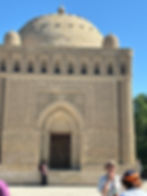
According to the legend, the founder of Samanids dynasty, Ismail Samanid, built this mausoleum for the father.
Later this building became the family burial-vault of all Samanids.
Presumably, Ismail himself, who died in 907, and his grandson Nasr II ibn Ahmad, who died in 943 and whose name was found on the wood plate above the entrance, were buried here.
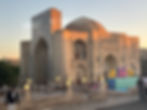
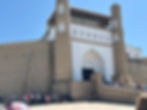
The ancient massive Ark Fortress is one of the architectural symbols of Bukhara as well and the oldest monument of the city. dating all the way back to the 5th AD
This large earthen military fortification was inhabited by the various royal courts that held sway over the region surrounding Bukhara and was used as a fortress until it fell to Russia in 1920.
Currently, the Ark is a tourist attraction and houses museums covering its history


On the opposite side of the Citadel of Ark is the Bolo House Mosque
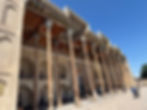
Bolo House Mosque ('above the pool')
The historic UNESCO structure built by order of the ruler of the city, Emir Shakhmurad. in 1712, is one of the last buildings constructed before the modern era
The building served as a Friday mosque and the Emir of Bukhara would often visit it for prayers.
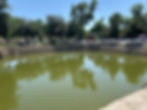
This building is also known as 'the 40-pillar mosque' its elegant pillared facade is reflated in the octagonal artificial calming pond just in front of the iwan.
.

Bolo House MInaret
Bolo House was built as the Emir’s mosque, but later it became a common Friday mosque
The minaret, was built a little later.
It is made in an elegant style, and also successfully combines Asian luxury and miniature.
Poi Kalon Mosque and Minaret ("foot of the Great")

Together with the Kalyan Mosque and the Mir-i Arab Madrassa, it forms the impressive Poi-Kalyan Ensemble in the center of Bukhara’s old town.
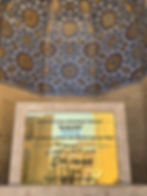
The architectural ensemble located in the heart of Bukhara. was built in 1127
The Kalyan Minaret is a towering brick structure.
The mosque features intricate decorations both on its exterior and interior, and is caped by turquoise domes
Inner Courtyard

Constructed in 1514, Kalyan Mosque serves as Bukhara's primary Friday mosque, with the capacity to accommodate 12,000 worshipers .
The current building replaced the original mosque that was destroyed by Genghis Khan's forces.
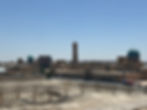
The complex is best viewed from a top of an archeological hill popular for selfie photos
The beautiful Madrasa at the Kalan Mosque

an educational institution established in 1536. Until 1920, it was considered one of the finest in Central Asia, with many notable individuals teaching and studying within its walls
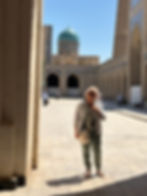
It is related to the sheikh Abdallah Yamani (from Yemen), the spiritual pir (guide) of sheybanids.
The Miri-Arab religious educational madrasahl with its 2 big blue domes towering above the surrounding buildings, forms the whole ensemble Poi-Kalyan that is the spiritual center of the city. and it was the only spiritual educational establishment in the USSR that had begun to function after the WWII

Ethnic Puppet Show as a popular form of Entertainment now is a tourist attraction
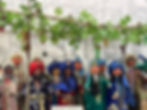
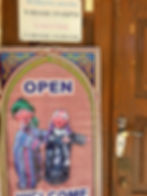
Address: 2 Sarrafon Street, Lyabi-Hauz, Bukhara ; Phone: (+998 90) 514-44-22 ;
The shop houses an exclusive collection of Uzbek theatrical puppets,
Its founder, Iskandar Khakimov. Initially, envisioned creating a performance to showcase Uzbek traditions, and in due course, these handcrafted puppets began to take the place of live actors
Once he had refined his ethnographic puppet show to his satisfaction, he became engrossed in the craft of creating these unique puppets. Eventually, he stepped away from his position at the puppet theater, and the Puppet Museum in Bukhara was born
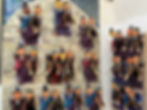
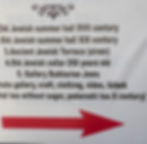
Just next to this popular puppet workshop/museum, is located what once was a vibrant Jewish quarter of Bukhara.
The Bukharan Jews are considered one of the oldest ethno-religious groups of Central Asia and over the years they have developed their own distinct culture.
Though the community has decreased significantly over the years, the city of Jewish Bukhara once had a thriving Jewish community.
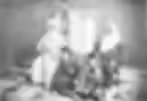
Some Bukharan Jews relate their own ancestry to the period of the Assyrian captivity and exiles of 722 BCE from the tribes of Naphtali and Issachar, basing this assumption on a reading of “Habor” at II Kings 17:6 as a reference to Bukhara,
Other traditions profess that the first to arrive were among those exiled from the Land of Israel at the hands of the Babylonians in 586 BCE.
Scholars believe Jews settled in Central Asia in the 6 C, but it is certain that during the 8-9 c they lived in Central Asian cities, and until approximately the 16 C Bukharan Jews formed a group continuous with Jews of Iran and Afghanistan.
One of the world’s oldest diaspora groups, they came to resemble the Muslim Tajiks and Uzbeks, amongst whom they lived, all the while maintaining connections to the wider Jewish world.
The Jewish community has declined significantly: If in the past it consisted of about 4,000 people, now just over 150-200 Jews residents remaining today,.

The Old Jewish Mahalla,- Quarter, of narrow twisted roads ,consisted once of 3 large mahallas – Kuhma-Mahalla (Old), Nav-Mahalla (New) and Amirobad (Emir town).
The main entrance to it is this arch at Lyabi-hauz, opposite the ancient peach tree (1477) that has dried up.
And once there were 13 Synagogues In the Old Quarter of Jewish Bukhara but only 2 remained: the nearest and far synagogues. In the 70s Jews began to leave the Soviet Union, including the countries of Central Asia, and the synagogues were closed.
Synagogue Cemetery House
We have not visited the Bukhara synagogue in the Mahalli Kukhma quarter, with a 300-year history, which was closed by the Soviet authorities in 1940.and only in 1945, at the insistent request of the community, the former building of the synagogue was returned to the Jewish community, which functions to this day.
Nor did we visited The Bukhara-Jewish cemetery located in the area of the “Old town”. The graves are dated back to 1945.
Grand Nodirbek Hotel
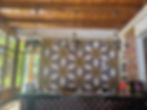
We did however, visited with a local guide, a compound composed of 6 reconstructed old Jewish houses in proximity to each other, sharing a praying room, storage rooms and a cellar, that was converted into an hotel.
The Muslim owners have recently opened the museum to demonstrate the old part of the house which with its parts, also conserved as a Jewish museum
The rooms, over 2 stories, are located around a central courtyard with carved wooden pillars and lots of decorative blue tile work.
Decorative written Referral to Jerusalem on the Walls
The museum displays lots of portraits of Bukharan Jews around the walls, as well as Jewish artifacts like .clothes, rugs and other items associated with daily life.
Walking &Shopping at the Historic Center
The main Namazgoh Street in old town Bukhara
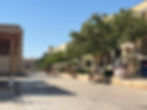

Carpet Workshop/shopping we were taken into
Suzane, the epitome of Uzbek craftsmanship, is a mesmerizing blend of intricate floral and mystical patterns, sometimes unraveling enchanting narratives.
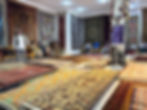
Pitchers Knife/Scissor shop Embroidery/Begs Shop
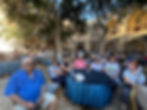
Late afternoon we were taken to the the beautiful large courtyard of the Nodir Devonbegi Madrasah, which is surrounded by many ethnic shops all around it, inside the small two-story rooms on four sides.
We came to watch along with many other visiting groups, a fabulous ethnic fashion show accompanied by local music ensemble.
The evening Folkloric Dances and Fashion Show Entertainment took place in the courtyard of this historical monument from the 17th century, so guests dine in a pleasant medieval setting while watching the grand ethnic production.
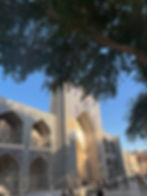
Part of the architectural complex located around the well-known Lyab-i Hauz. was built between 1622 and 1623 by vizier Nadir Devanbegi, who served as the minister of Bukhara Khan, at a court yard of one the strongest and powerful representatives of Ashtarkhanid dynasty - Imam Quli Khan ( ruled in Bukhara in 1611-1642)
The 2 story structure decorated with beautiful colorful tiles, was originally built as a caravanserai, - an inn that provided lodging for travelers, merchants, and caravans. it was converted into a madrasah by the decision of the Khan.
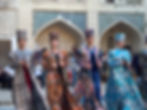
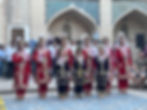

Following performance and prior to dinner, our poor bus driver was held back by Bukhara's Police for stopping the bus too long at a pick up spot, while waiting on the group, to return and board the bus.
The police couldn't care less that the entire group, left without the driver, was held back for over an hour, The Police denied the driver his right to drive.
Eventually after a tough negotiation
the driver was allowed to drop us at the restaurant , and was required to find a replacement driver, until his fine was payed..
Diner at: Restoration Art, Painting and Spirituality, Restaurant

The house of Bukhara's is a workshop/store and a restaurant of a well known master of Persian calligraphy Miniaturists named Toshev Davlat
Davlat has been restoring ancient books for over 20 years. For his own works he uses ancient or handmade paper
It takes him 3 months to finish each work
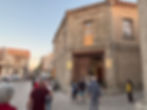
davlat@rambler.ru. davlatbek_75@gmail.com. +998 90 715 37 86
10 Arabon St. "Uztoz Shogird"
Uzbekistan Bukhara

Davlat Toshev is a master artisan who began his career in 1990 He started teaching in 1992. He was secretly taught the principles and techniques of Persian miniature painting by his father, at the time when the state discouraged practicing it as a religious art.
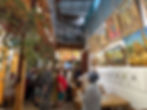
Davlat restores ancient manuscripts and creates new paintings, sometimes using sheets of silk paper dating back over 200 years. He is inspired by the rich history of Bukhara, its cultural heritage and the profound spirituality of the people: from there he borrows ideas and themes for his works. Besides painting, Davlat dedicates a lot of time and effort to teaching children, believing that every child has talent and potential. He converted a run-down 19th-C building in Bukhara into a free school, where everyone can attend to learn ancient art.
Emir's Summer Palace
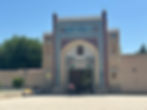
"A Star Similar to the Moon".
The countryside residence of the Emir of Bukhara, that was built in the late 19th to early 20th C , is currently a museum of decorative and applied arts.
It was constructed during the rule of the last governing Emir Sayyid Mir Muhammad Alim Khan (1912–1920)
Located 4 km to the north of Bukhara, on the very edge of the city, it is the most famous landmark outside the Old Town - The estate is adorned with a park, pool and outbuildings. and is divided into the old and the new.
Built in 1911 for the last emir, Alim Khan, the three-building compound incorporates elements of both Russian and traditional Bukharan architecture.
According to legend, choosing a place for the palace from several variants, the emir people put a carcass of freshly killed sheep on each of them, and chose the one where it last remained fresh - meaning there was the best wind rose.
But since the time of Nasrullah, nothing has been preserved here, the present ensemble is entirely related to the era of the Russian Empire:
The new complex was built in a European style but is divided into a male and a female section, with an Eastern interior design

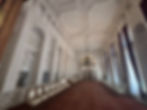
The main structure of this palace, a white П-shaped is granted to the throne hall which under its arks the public meetings of the elite authorities used to be held..
The palace was not residential, but ceremonial and therefore is located closer to the entrance:
.Behind the second gate starts a secluded shady garden. The swimming-pool and the emir harem premise are in the garden.
Lavish interiors, colorful tile work & courtyards, reception Rooms - a meeting place for guests and delegations. can all be found here.
The museum was opened in 1927 and consisted of three sections: "The Lives of the Last Emirs," "Urban Craftsmanship," and "The History of the Bukhara Revolution"
Currently, the palace complex houses the Museum of Decorative and Applied Arts,
The Ibn Sinna etching I bought on the premise, is from a local artist named Nodir Shoh
who displays his work along with many other artists who sell their work inside the compound grounds.

+998 91 977 60 60 +998 97 050 60 60.
PCW2+JQQ, Bukhara, Bukhara Region
A bit away from the center this restaurant, is popular with the locals. and serves very good food.
It is spread over 3 floors , while the first is rented for private parties. There was one on the night the group dined there and the noise of the music was blasting.
Each time any one from the group went down from the second floor to the restroom, guest dancing at the party , tried to pull any group's member in, to join the dancing
TO BE CONTINUED...










